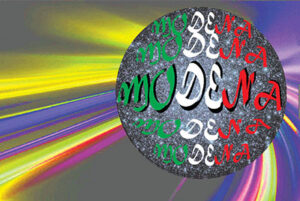Maranello, 21 August 2024 – The work of the drivers and engineers in the endurance simulator is essential both in preparing for a race and afterwards. In the weeks before an FIA WEC race, the simulator is a valuable tool for organising sessions to fine-tune the Ferrari – AF Corse team’s 499Ps and study and analyse the different conditions in which the team might compete. After the event, the simulator allows you to work on the data collected on the track and see what can be improved for the future. Mauro Barbieri, Endurance Race Cars Performance & Regulations Manager, and official drivers Antonio Fuoco and Alessandro Pier Guidi explain the “secrets” of simulator sessions and the differences between “real” and virtual driving.

Hardware e software. “The simulator comprises a cockpit that faithfully reproduces the cabin of the actual car, inside which most of the buttons and switches have the same features and functions as the 499P race car,” explains Mauro Barbieri. This assists the driver in their work, as they can familiarise themselves in the simulator with all the procedures they will carry out on the race weekend. “The cockpit is fixed on a platform equipped at the bottom with a ‘hexapod’,” Barbieri continues, “which has six actuators that allow the cockpit to move in all directions through space, giving the driver all the sensations of acceleration, roll and yaw that they receive at the wheel of the actual car.”
The design and construction of an instrument as sophisticated as the one at Maranello includes several components. “At Ferrari, we have reproduced almost all the software inside the 499P’s ECU, including various logics, strategies, and control systems. We aim to make the simulation as faithful to reality as possible,” says Mauro Barbieri.
Before a race. “The simulator is essential when preparing our Hypercars for a race on new track ,” says Antonio Fuoco, Prancing Horse official driver, who is competing in the FIA WEC in the 499P number 50 alongside Miguel Molina and Nicklas Nielsen. The trio won the 24 Hours of Le Mans 2024. “We have to consider that the first day of activity on the circuit is usually Friday, with short free practice sessions, and it’s not easy for all three crew drivers to spend a long time in the 499P.”
Mauro Barbieri goes into detail: “When approaching a new track, where we have never tested or raced the 499Ps, we prepare ourselves for many unknowns. The simulator allows us to create a list of actions and possible solutions for the various problems that might arise.”
Simulation and reality. While the simulator is a very high-tech tool essential in preparing for the race and afterwards (when all the data collected on the track is analysed and studied with future events in mind), there are differences from the “real” car. “The feel is a little different from reality,” explains Antonio Fuoco. “There are specific characteristics in terms of driving impressions. The 28-year-old Italian driver continues: “It is crucial for us to work on the simulator, especially before a race, to familiarise ourselves with the track and, once on the circuit, to be ready to adapt to the track as quickly as possible.”
On the relationship between reality and simulation, Alessandro Pier Guidi, winner of the 24 Hours of Le Mans 2023 with the 499P number 51 alongside James Calado and Antonio Giovinazzi, adds: “The most significant difference is the lateral force felt in long corners, which is not as continuous as that experienced in reality. So, when you take long corners, you only feel some of the high lateral force you feel on the 499P race car.” Pier Guidi adds that you also find some physical differences “during braking, when you feel the initial ‘bite’ of the brakes, that is, when you start braking, but then the deceleration is not as steady as you experience in reality, on the track.”
Dialogue. The approach to the simulator, in terms of driving and feedback with the engineering team, reflects the work with the racing hypercar. “We use the simulator as if it were an actual car,” says Alessandro Pier Guidi. “The feedback I give the engineers after a session in the simulator is the same as my feedback on the track, and this is also true when I suggest changes to the setup or replacing a component. The big difference is the timing of these operations: in the simulator, they are obviously shorter, allowing us to optimise the work performed at Maranello,” concludes the 40-year-old driver.










